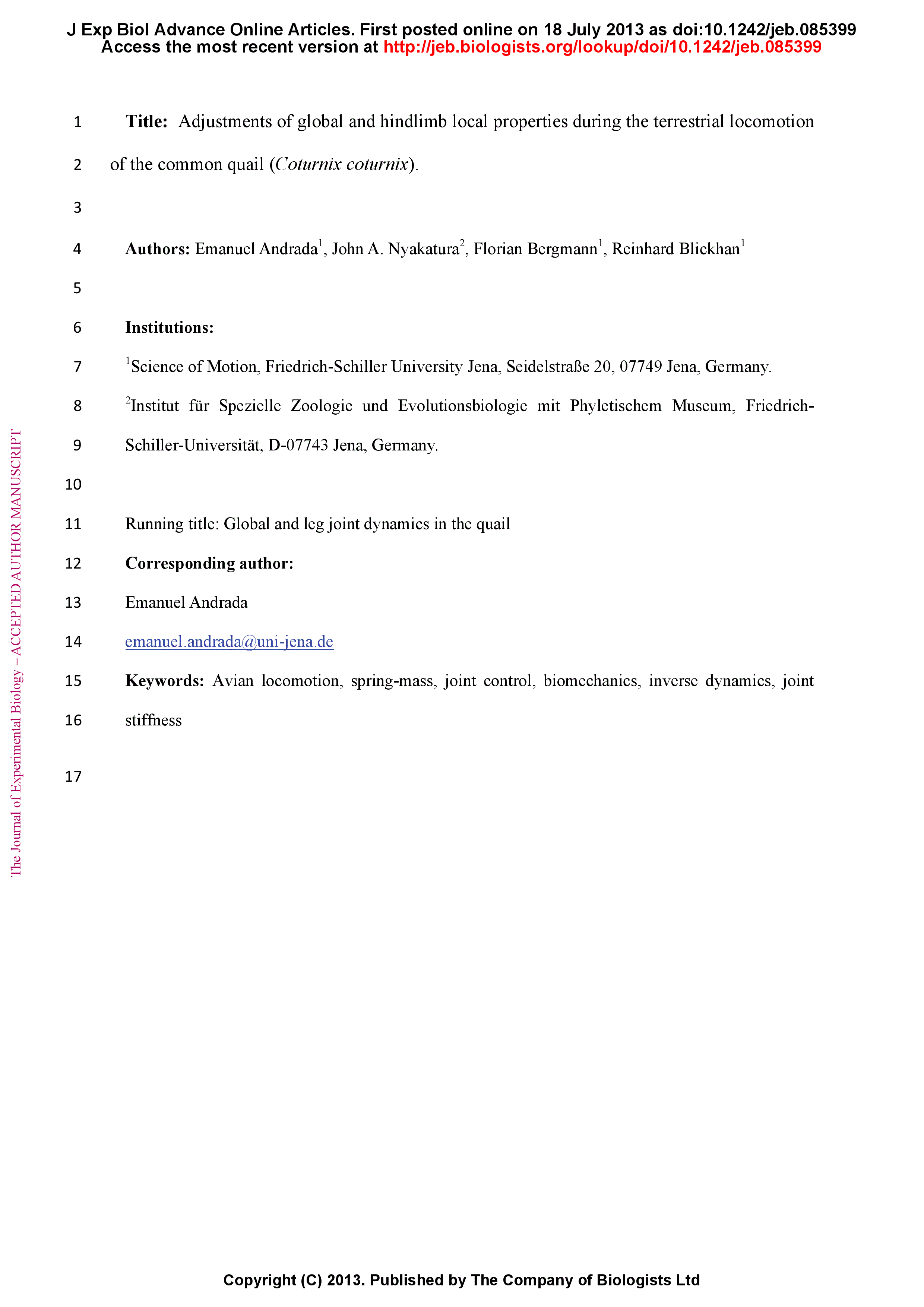Summary
Increasing insight into neuro-mechanical control strategies during perturbed locomotion is gained. In contrast, more general analyses on simple model (template) related parameters during avian terrestrial locomotion are still rare. Quails kinematic data obtained using X-ray videography combined with ground reaction force measurements were used as a basis to investigate how "global" template and "local" leg joint parameters in this small predominantly terrestrial bird change with speed and gait. Globally, quail locomotion approximates a spring-like behavior in all investigated gaits. However, ground reaction forces are more vertically oriented which may help to balance the trunk. At the joint level, practically all the spring like work was found to occur in the ITJ (intertarsal joint). From walking to grounded running the local stiffness of the ITJ decreases similarly to the reduction observed in global leg stiffness. Thus, in gaits without aerial phases the quails may modulate ITJ stiffness to regulate global leg stiffness, and therefore gait changes, to a significant degree. At higher speeds leg compression and leg stiffness are increased (the latter to values not significantly different to those obtained during walking). This enables the animals to shorten contact time and to generate aerial phases (running). However, we did not observe a change in the stiffness in the ITJ with a change of gait from grounded running to running. We hypothesize that a more extended leg at touch-down, controlled by the joint angles in knee and ITJ, has an important influence in the leg stiffness adjustment process during running.








